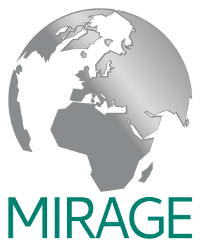

Using the names of suspected predatory journals and publishers on blacklists by Beall ( 2016), we derived the ISSNs of 3,293 titles from Ulrichsweb ( 2016) and searched Scopus ( 2018a) for them. This paper helps to fill that gap by examining the propensity to publish in potentially predatory journals for 172 countries in 4 fields of research over the 2015–2017 period. Systematic scrutiny of cross-country differences worldwide is lacking. No study has yet examined the penetration of national research systems by predatory publishing in a broad comparative perspective. ( 2019) showed that around 5% of researchers published in such journals in Italy. For example, Perlin ( 2018) found that suspected predatory journal articles accounted only for about 1.5% of publications in Brazil, while Bagues et al. Could it be that some smaller countries are actually far worse off, though they do not stand out in the absolute figures? Just how large is the propensity to predatory publishing at the national level? Which countries are most and least affected by predatory publishing, and why?Įxisting literature provides very scant evidence along these lines and the studies at hand are limited to individual countries and use different methodologies, so the results are not easily comparable. All of the countries cited above are, unsurprisingly, quite large. India appears to be the main hotbed of predatory publishing, but in the context of India’s gigantic research system, this may be much ado about little. No matter how insightful these studies are in revealing from where contributors to predatory journals originate, we still know very little about the magnitude of the problem for the respective countries and regions. ( 2018) focused on 27 such journals in economics, in which the authors were most frequently from Iran, the United States, Nigeria, Malaysia and Turkey. Demir ( 2018) combed through 832 predatory journals and confirmed that by far the greatest number of authors are from India, followed by Nigeria, Turkey, the United States, China and Saudi Arabia.

( 2015) examined 7 pharmaceutical journals and also identified the vast majority of authors as being from Southeast Asia, predominantly India, and, to a lesser extent, Africa. On a sample of 47 such journals, Shen and Bjork ( 2015) found that the authors were highly skewed to Asia and Africa, primarily India and Nigeria. So far, only a handful of studies have examined the geographical distribution of authors published in journals suspected of predatory practices by Beall ( 2016). In return, predatory publishers turn a blind eye to any limitations of papers during peer-review in favor of generating income from authors' fees the worst of them fake the peer-review process and print almost anything for money, without scruples (Bohannon 2013 Butler 2013). Authors are motivated to pay to have their work published for the sake of career progression or research evaluation, for instance (Bagues et al. However, this entails a conflict of interests that has the potential to undermine the credibility of open-access scholarly publishing (Beall 2013).

#THE GEODIST DATABASE FOR FREE#
“Predatory” (or fraudulent) scholarly journals exploit a paid open-access publication model: the publisher does not charge subscription fees, but receives money directly from the author of an article that becomes accessible for free to anyone. Policymakers and stakeholders in these and other developing countries need to pay more attention to the quality of research evaluation. Arab, oil-rich and/or eastern countries also appear to be particularly vulnerable. Countries with large research sectors at the medium level of economic development, especially in Asia and North Africa, tend to be most susceptible to predatory publishing. In the most affected countries, including Kazakhstan and Indonesia, around 17% of articles fall into the predatory category, while some other countries have no predatory articles whatsoever. Analysis of data for 172 countries in 4 fields of research indicates that there is a remarkable heterogeneity. 324 of journals that appear both in Beall’s lists and Scopus with 164 thousand articles published over 2015–2017 were identified. Using the names of “potential, possible, or probable” predatory journals and publishers on Beall’s lists, we derived the ISSNs of 3,293 journals from Ulrichsweb and searched Scopus with them. This paper maps the infiltration of journals suspected of predatory practices into the citation database Scopus and examines cross-country differences in the propensity of scholars to publish in such journals. Predatory publishing represents a major challenge to scholarly communication.


 0 kommentar(er)
0 kommentar(er)
